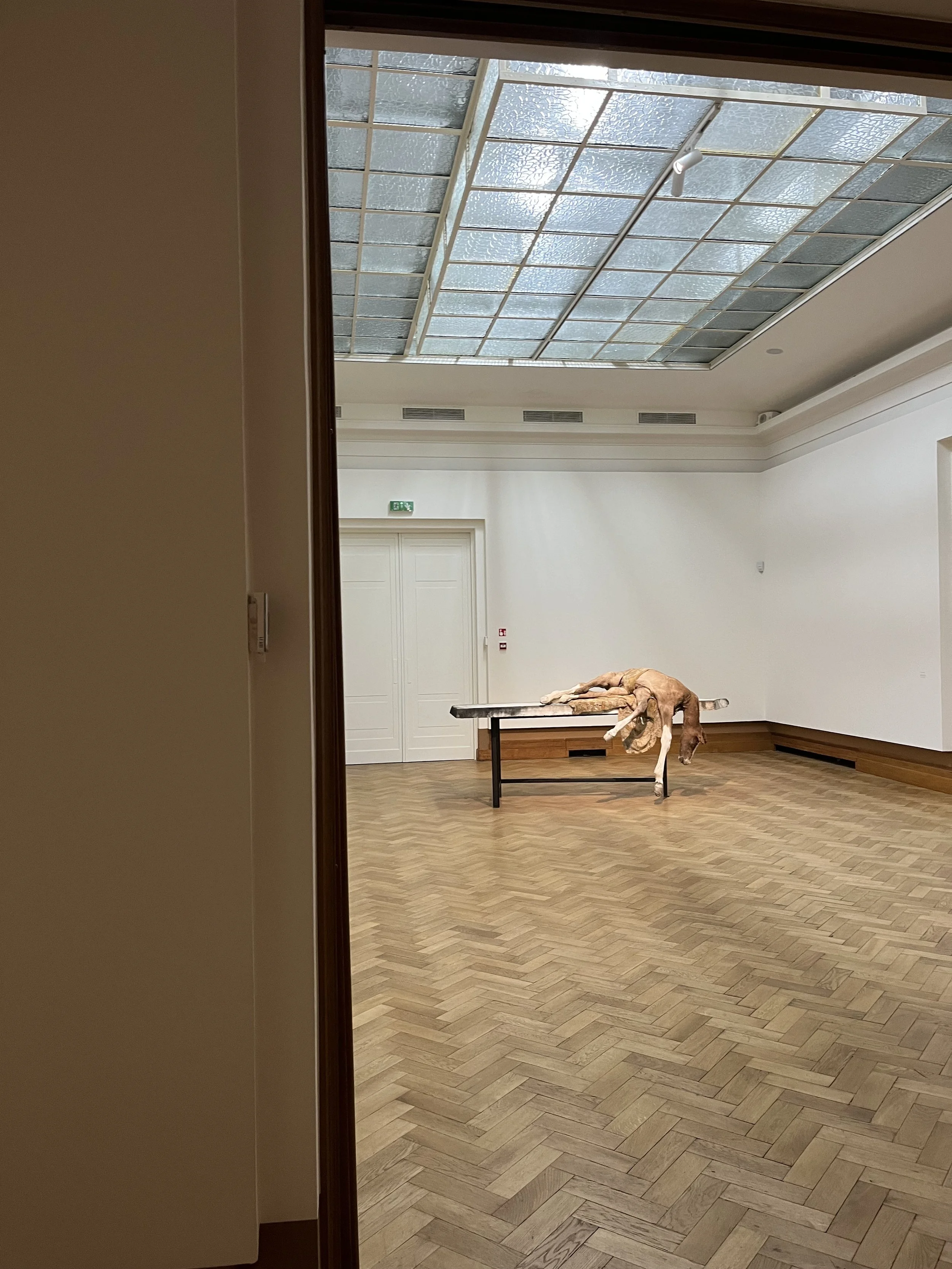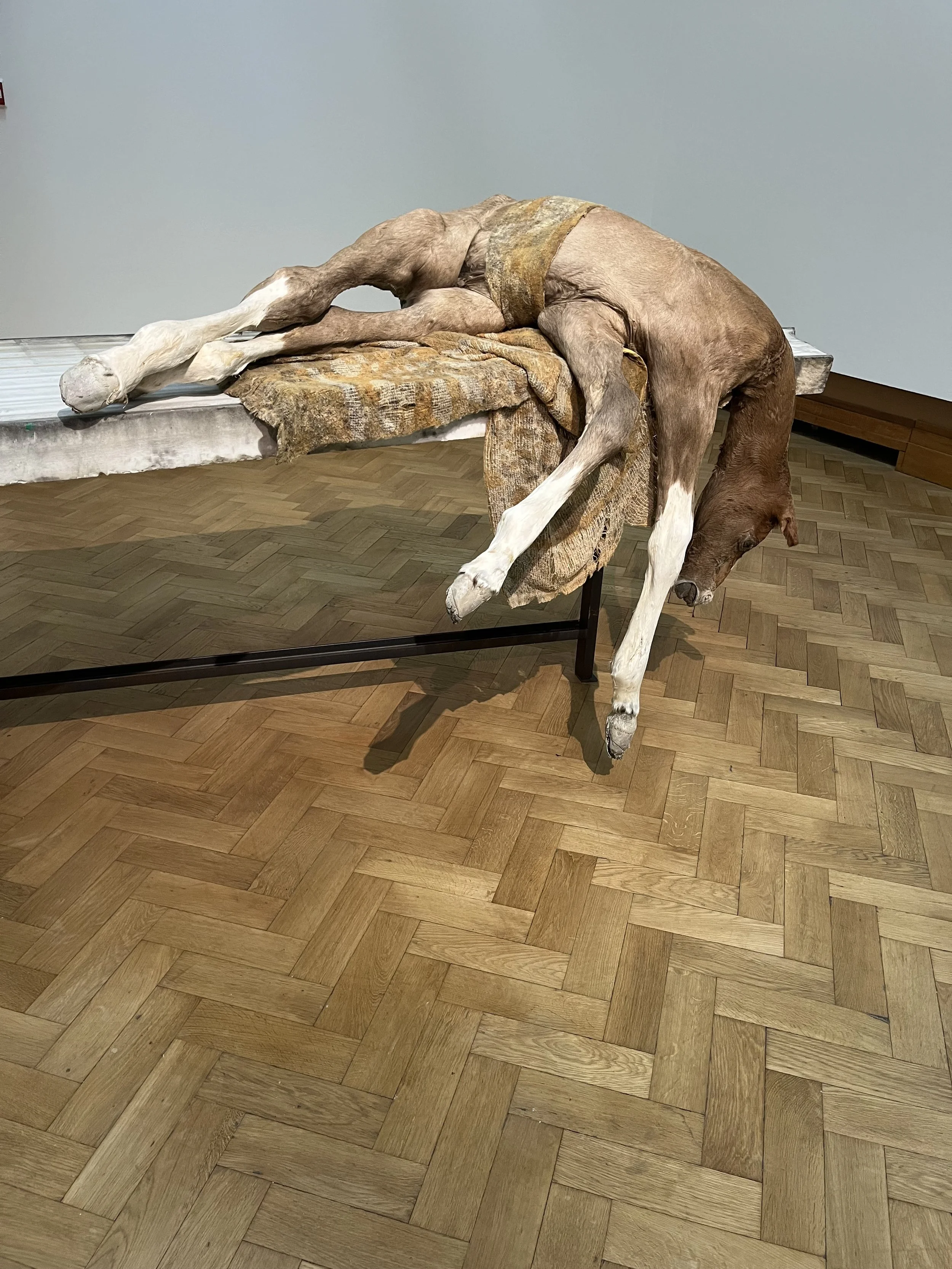Khorós
Dialogues in Wax, Wood, and Wound
In her most extensive exhibition to date in Brussels, internationally renowned Belgian artist Berlinde De Bruyckere unveils ‘Khorós’ — a raw yet poetic reflection on 25 years of her sculptural evolution. Presented at Bozar as the opening chapter of the new ‘Conversation Pieces’ series, the exhibition unfolds as a layered dialogue — weaving together sacred and profane, body and object. The title ‘Khorós’ , derived from the Greek chorus in ancient tragedy, sets the tone for the exhibition. De Bruyckere’s work goes into conversation with other artistic voices and historical resonances. The human body, in its purest form, lies at the heart of the exhibition.
For those new to De Bruyckere’s work, don’t expect a classical portrayal of the body as an idealized form. Instead, the artists draws inspiration from the wounded, shelter-seeking, metamorphosing body: one that bleeds, rots, blooms, and grieves. De Bruyckere's signature materials — wax, woolen blankets, aged wood, animal hides — shape a sculptural language that merges mythological, religious, and autobiographical dimensions.
In ‘San Sebastian’, a monumental wax cast of a fractured elm transforms both martyr and monument - its bark merging with flesh, pierced and tenderly wrapped. ‘It almost seemed a lily’ presents the delicacy of gold-threaded embroidered petals that echo the hidden devotion and intricate female labor of 16th-century ‘Besloten Hofjes’.
In this show, De Bruyckere reflects alongside like-minded artists and the influences that resonate through her practice. Patti Smith’s poetry echoes alongside the delicate stillness of the foal in Lost V, lying on a marble table, softened by a worn blanket. In the same space, the sculpture ‘I am the tablet #8’ by her husband and fellow artist Peter Buggenhout is on view. Both artists share a conceptual foundation: challenging perceptions of strength and permanence. In their work, beauty is not separate from ruin; it is born from it. This radical visual language echoes the artistic voice of Pier Paolo Pasolini, whose influence threads through the exhibition.
The exhibition expands into existential and socio-political territory. A recurring motif - the blanket, present in De Bruyckere’s work since the 1990s — holds layered meanings: comfort and suffocation, protection and neglect. In ‘Courtyard Tales’, the blankets have lost both their function and individuality, worn down by nature and time. This pervasive state of decay mirrors the failing of social structures we are increasingly confronted with.
Sexuality and mortality — Eros and Thanatos — pulse throughout the exhibition. Of all her shows, this may be the one where the erotic takes on its most prominent role. Drawing inspiration from Hindu lingam, religious rituals, organic forms, and anatomical studies, De Bruyckere confronts taboos surrounding flesh and faith. Her wax-cast skins, glass domes, and erotic drawings weave together sacred iconography and raw intimacy. These works resonate with the tensions found in both Christian and pagan traditions — at once reverent, sensual, and deeply embodied. Here, De Bruyckere challenges not only religious conventions but also the cultural boundaries between purity and desire, creation and decay.
In ‘Khorós’, Berlinde De Bruyckere offers more than a retrospective. Through her visceral material language, she confronts themes of vulnerability, transformation, and transcendence with unflinching honesty. By drawing body, history, and myth into close and often uneasy dialogue, De Bruyckere reminds us that art is not meant to resolve contradictions — but to carry them, and make them felt.






























